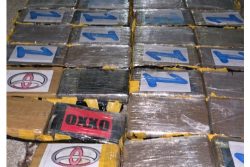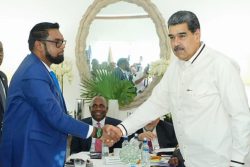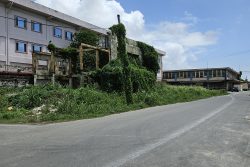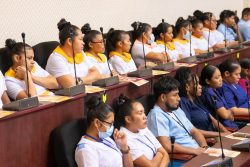A September, 1974 US diplomatic cable described the sale of the Guyana Graphic by the Thompson Group to the state as a forced one and cites the then PNC government’s “harassment” of the newspaper’s employees as a key factor.
The cable released on the whistle-blowing website WikiLeaks said that a top Graphic official had told US embassy personnel that the “purchase was by forced sale”.
The cable by then Ambassador Max V Krebs to the US State Department said that the Graphic had been negotiating for several weeks with the Guyana Trades Union Congress for the purchase of the newspaper by that body for $650,000. The exchange rate at the time was US$1 to $2.17.
“Though Graphic was money-maker, Thompson preferred to sell rather than continue fighting GOG harassment of personnel (former Editor fired under GOG pressure) and administrative pressure.”
The cable said that the Thompson team came to Guyana on September 22 for talks on the purchase. It said that though an independent evaluator had assigned a market price to the Graphic of $1 million, the Guyana Government proposed $450,000 cash on a take-it-or-leave-it basis. The cable added that attempts by Thompson of Canada to compromise at $650,000 were unsuccessful “with GOG allegedly responding that no other purchaser would be authorized by govt and that if Thompson Enterprises refused to sell, GOG could ensure that no profits were made.”
The cable also stated that a Graphic official believed that the government would close down the present printing plant and amalgamate the afternoon Graphic with the morning Chronicle. The Graphic official was reported as saying that the value of the newsprint in stock alone was $300,000.
Said Krebs: “Demise of Graphic can probably be realistically interpreted as demise of principal remnant of press freedom in Guyana, since independent-minded editor of already govt-owned Chronicle can no longer use argument that story will appear in Graphic to back up his preference for carrying relatively unbiased news, including factual reports of criticism of govt.”
The cable added that while the then Radio Demerara and the PPP’s Mirror remained outside of govt ownership, the Mirror functioned on a thin string of limited newsprint while radio was controlled through the requirement of annual renewals of licence.
The cable had said that the Graphic was larger than the government-owned Guyana Chronicle and had newspaper sales of 32,000 daily and 51,000 on Sunday.








